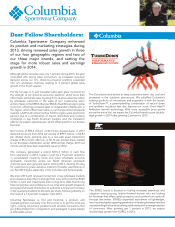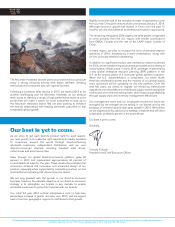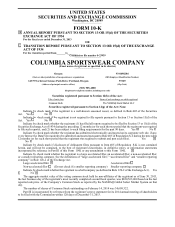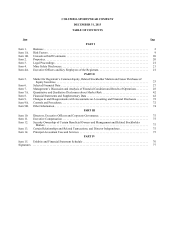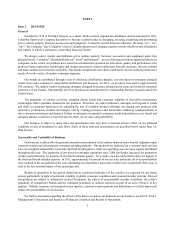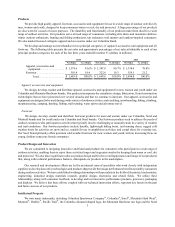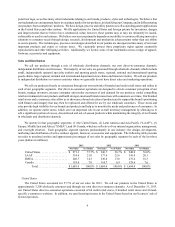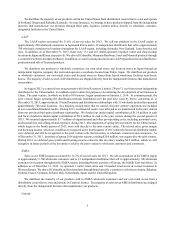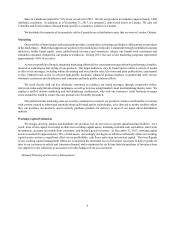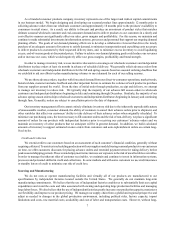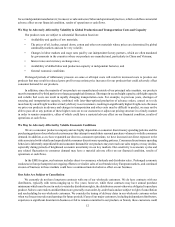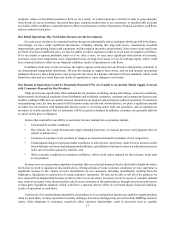Columbia Sportswear 2013 Annual Report Download - page 10
Download and view the complete annual report
Please find page 10 of the 2013 Columbia Sportswear annual report below. You can navigate through the pages in the report by either clicking on the pages listed below, or by using the keyword search tool below to find specific information within the annual report.6
Sales in Canada accounted for 7.0% of our net sales for 2013. We sell our products in Canada to approximately 1,000
wholesale customers. In addition, as of December 31, 2013, we operated 2 outlet retail stores in Canada. We also sell
Columbia and Sorel products through brand-specific e-commerce websites in Canada.
We distribute the majority of our products sold in Canada from a distribution center that we own in London, Ontario.
Marketing
Our portfolio of brand names and trademarks provides a competitive advantage and helps to differentiate our products
in the marketplace. Marketing supports our position in the marketplace, helps drive alignment through established seasonal
initiatives, builds brand equity, raises global brand relevance and awareness, infuses our brands with excitement and
stimulates consumer demand for our products worldwide. During 2013, the cost of our marketing programs represented
approximately 4.6% of net sales.
Across our portfolio of brands, integrated marketing efforts deliver consistent messages about the performance benefits,
innovative technologies and styling of our products. Our target audiences vary by brand and we utilize a variety of means
to deliver our messages, including online advertising and social media sites; television and print publications; experiential
events; branded retail stores in selected high-profile locations; enhanced product displays in partnership with various
wholesale customers and distributors; and consumer and trade public relations efforts.
We work closely with our key wholesale customers to reinforce our brand messages through cooperative online,
television, radio and print advertising campaigns, as well as in stores using branded visual merchandising display tools. We
employ a staff of in-store marketing and merchandising coordinators, who visit our customers’ retail locations in major
cities around the world to ensure that our products are favorably presented.
Our global internet marketing sites are used by consumers to research our products’ features and benefits, to interact
with content created to inform and entertain about each brand and its technologies, to be directed to nearby retailers where
they can purchase our products, and to directly purchase products for delivery in most of our major direct-distribution
markets.
Working Capital Utilization
We design, develop, market and distribute our products, but do not own or operate manufacturing facilities. As a
result, most of our capital is invested in short-term working capital assets, including cash and cash equivalents, short-term
investments, accounts receivable from customers, and finished goods inventory. At December 31, 2013, working capital
assets accounted for approximately 78% of total assets. Accordingly, the degree to which we efficiently utilize our working
capital assets can have a significant effect on our profitability, cash flows and return on invested capital. The overall goals
of our working capital management efforts are to maintain the minimum level of inventory necessary to deliver goods on
time to our customers to satisfy end consumer demand, and to minimize the cycle time from the purchase of inventory from
our suppliers to the collection of accounts receivable balances from our customers.
Demand Planning and Inventory Management


